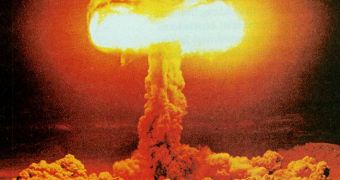On August 6, 1945, a uranium-based weapon, "Little Boy", was released over the Japanese city of Hiroshima. Three days later, a plutonium-based weapon, "Fat Man", was dropped onto the city of Nagasaki. They were the first (and only) nuclear attacks in history.
Officially, the first nuclear test - code-named "Trinity" - took place on July 16, 1945, in the desert north of Alamogordo, New Mexico. A new document, classified by the British 4 years earlier, shows plans to build a fission nuclear weapon, but was buried by officials as it was considered too dangerous.
"The paper is such that it would be inadvisable to publish it at the present time." So ends a yellowed note dated 18 December 1941 from James Chadwick to the UK's Royal Society. The note was attached to a batch of papers written by two French physicists, Hans Halban and Lew Kowarski.
The Royal Society decided to break the seal on its 75th anniversary, and, amazingly, found plans to design a nuclear fission reactor and ways of initiating a chain reaction. Discovered nine months earlier, in a box on a shelf in the Royal Society's archives, the documents were classified by British authorities, who feared that the Nazis could get hold of them.
This may actually have prolonged the war, as through the unconditional surrender of Germany on May 8, 1945, the Manhattan Project - aimed to develop the first nuclear weapon (atomic bomb) during World War II by the United States, the United Kingdom and Canada - was still months away from a working weapon.
What would have happened if the atomic bomb had been built four years before? Could that discovery have changed the course of history as we know it? Could it have saved the lives of millions of innocents? Ask the Brits!

 14 DAY TRIAL //
14 DAY TRIAL //